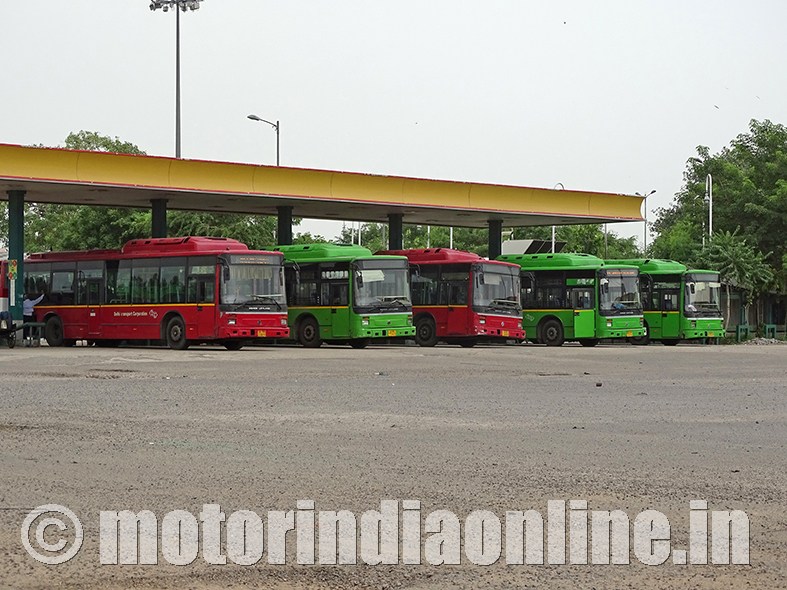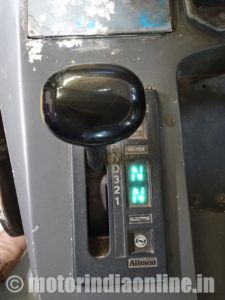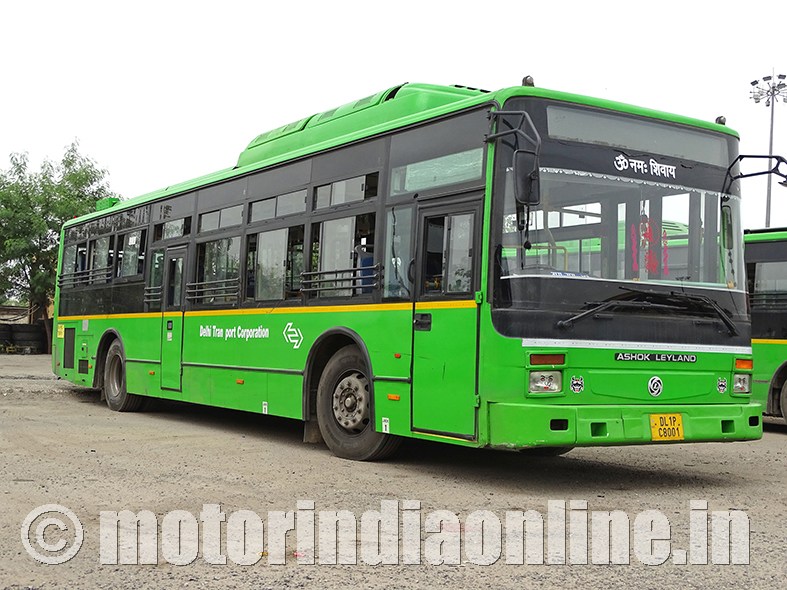World’s largest operator of eco-friendly CNG-powered city buses DTC opens up on its operational practices, tech-savvy initiatives, and its tryst with automatic transmission.

Delhi is a city of contrasts. We may find the country’s most powerful people living here, but there are also the least empowered and poorest of the poor; uber-cool cars and sports bikes will share the roads with three-decade old scooters, while we also have the choice of taking a luxury cab or a human-pedaled cycle rickshaw! Cosmopolitan and conspicuous lifestyles co-existing with the cost-cutting middle-class, the city is a melting pot of various cultures, ethnicities and values. In such a milieu, mobility needs of the Delhites also meet the extremes. Metro trains, private cabs, state-owned buses, feeder vans, and e-rickshaws are all available, but how far are they inclusive enough to cater to the needs of varied sections of this unequal society? DTC buses, by far with my experience in the city for the last four years, are one of the most inclusive and affordable means of transport for Delhites to roam around, connecting almost every region and outback, even at odd times. There are also cluster buses coordinated by DIMTS to augment the reach of affordable bus services to less profitable routes. With Delhi being synonymous with dirty pollution, these buses escape the curse and remain fairly green too. That’s quite a thing isn’t it?
We visited DTC’s Head office to meet Dr. R.S. Minhas, Deputy Chief General Manager (PR and Marketing), for an exclusive interaction. Says Dr. Minhas: “At present, DTC is operating 3,944 buses that run over 7 lakh kilometres every day, and very soon a global tender will be floated for another 1,000 buses to replace the aging 163 semi-low floor buses.”
Of DTC’s total fleet strength, around 2,688 are Tata-Marcopolo low-floor buses, while the remaining 1,093 are Ashok Leyland low-floor models, all CNG variants powered by Cummins-sourced engines generating power output up to 230 hp. Out of these, 1,278 buses are air-conditioned with the most-affordable fare of Rs. 25 (maximum slab) unlike any other metro city in the country. That’s perhaps the reason why even the AC buses are crowded in Delhi, which may not be the case in other cities. “For now, Delhi needs 16,000 buses to cater to the city’s ever burgeoning population”, he says, hinting at the challenges of serving with an unfavorable bus-to-people ratio.
These automatic transmission-equipped low-floor buses were introduced in 2007-08 in the run up to the 2010 Commonwealth Games which is when DTC changed its fleet maintenance practice from in-house to Annual Maintenance Contracts (AMC) with the OEMs valid for 12 years or 7.5 lakh kilometres whichever is later. DTC’s operational concerns remain limited only to staffs operating the buses and fuel. However, Dr. Minhas says that even though the AMC model is expenditure-wise more or less similar to in-house maintenance, it will again be switching back to in-house maintenance for the upcoming 1,000 new buses once past their standard warranty period. Asked about the efficacy of in-house care, he replies that DTC is paying attention to enhance the capabilities of its maintenance division by adequate training and infrastructure.
With regard to CNG, DTC gets slightly subsidized fuel from Indraprastha Gas Ltd. (IGL). “CNG offers flexibility in terms of cost-per-kilometre valuation and it is a green fuel – a need of the hour for the city’s transportation system”, he observes. On an average, the low-floor buses return 2.5 km/kg for non-AC variants and around 2 km/kg for the AC variants, which is slightly lower than the 3 km/kg mileage of the last-generation semi-low floor bus, according to DTC. This drop in fuel efficiency is likely to be because of higher power output and automated transmission system of the rear-engine low-floor buses.
Dr. Minhas says: “DTC has realized that technology is a great enabler in providing quality and premium services to commuters, and is trying to embrace every possible opportunity.” Just earlier this month, DTC and Delhi Metro Rail Corporation (DMRL) had announced the introduction of ‘common mobility cards’ in 200 DTC buses as part of a trial run, where the commuters can use their metro smart cards in DTC buses. Electronic ticketing machines are already in place, eliminating the ambiguity associated with the generic tickets at the place of boarding and de-boarding.
The state-owned transport corporation has also launched on-board Wi-Fi facility as a pilot project and is positive that it can be extended to other buses in the fleet in the days to come. Further, a huge chunk of buses have been GPS-enabled, allowing the depot managers to track the location and status of the running vehicles, including analytics on rash driving and compliance to traffic rules. “DTC is now strengthening and upgrading the GPS systems, including coverage to the entire fleet, which can be used for multiple objectives such as real-time status tracking of buses in DTC’s mobile app and on digital information boards at bus stops”, he adds.
In terms of commuter safety, DTC is constantly making efforts to make bus travel more women-friendly. About 200 buses in two major depots are already under CCTV-surveillance, while extending the same to the entire fleet is under consideration with the government. It has inducted over 245 women conductors and a woman driver so far in its workforce, while ‘marshals’ are employed in evening and night trips on vulnerable routes to help women commuters reach their destinations safely. Apart from reservation of seats for women in the buses, the corporation is also operating 28 ‘Ladies Special’ trips on key routes in the city. “Women sensitization is one of the primarily objectives of the training sessions for new recruits and other employees”, observed the Deputy Chief GM.
Shifting to ‘D’ mode: DTC’s tryst with Automatic Transmission
Automated shifting is popular in cars; some like them a lot, others not much. For a person who sits behind the wheels (rather large wheels!) of a bus for around eight hours every day, shifting ‘rock-like’ gears in bumper-to-bumper traffic can’t be fun. And the more he or she yanks the bus while depressing the clutch every time on gear shifts, commuters are going to feel uncomfortable. Automatic transmission in a city bus is a real solace for both drivers and passengers. There are other benefits too.
DTC is one of the first STUs in India to have inducted buses with fully automatic transmissions almost a decade back, gradually reaching to over 95 percent of its entire fleet by numbers. All of its 3,600-odd low-floor rear-engine Tata and Ashok Leyland buses are equipped with fully-automatic transmission with retarder sourced from Allison Transmission, and some have clocked more than 700,000 kms without any transmission over-haul. Unlike many other STUs, DTC’s quick acceptance of these buses can be attributed to the technology’s operational advantages and the flexibility offered by the CNG fuel. Dr. Minhas explains that these buses with auto gears are driver-friendly, offering easier drive especially during nerve-racking city traffic and start-stop driving conditions, while the passengers are also comforted with lesser jerks and reduced engine noise. Though higher procurement costs and relatively lower fuel efficiency might seem to be a challenge, the long-term benefits of automatic transmissions easily stand out.
Extended maintenance period is an added advantage. Oil filter replacement is warranted only at 120,000 kms, while the transmission oil needs replacement for every 240,000 kms only. Other than these, there is hardly any maintenance required for these fully automatic systems. “With widespread usage, the operational benefits seem to overweigh the minuses while using automatic transmission. Commuters prefer these buses, consider it as a premium service, while we also observe a positive impact on drivers’ absenteeism. There are also less breakdowns owing to transmission-related issues”, he observes. At present, there are over 10,000 city buses running on Allison-equipped fully automatic transmission in over 30 cities in India. After the initial success of rear-engine automatic buses in cities like Delhi and Bengaluru, many STUs have even opted for front engine buses with automatic gearboxes, including that of cities like Mumbai, Ahmedabad, Surat, Pune, Naya-Raipur, Amritsar, and Chandigarh.
Attracting and retaining drivers is a solid reason for recommending automatic transmission. Driver shortage isn’t going away, and automation sure flattens some of the bottlenecks that prevent youth from taking up this job. Together with air-conditioning, the work ambience gets improved while it also helps in safe driving as drivers can spend more time focused on the road and their surroundings, with less distractions per se. Automatics facilitate speed management also; for instance, the slow acceleration in idling drive mode allows drivers to remove their foot from the pedal and easily manoeuvre out from heavy traffic, parking, and other low-speed situations. They not only reduce the wear and tear on the driver’s body and increase their productivity, but also help keep the driveline in good condition by avoiding overuse of components. As a corollary benefit, the low noise-vibration-harshness (NVH) levels are a boon in city operations. Complemented with the low-floor layout and rear-engine configuration, these buses offer an uncluttered dashboard and a wider aisle up front, offering more space and facilitating easier flow inside the bus. Complemented by air suspension and a much-balanced centre-of-gravity owing to the engine heaviness over the rear, these buses excel with enhanced stability especially in downslopes and curves.
With improving technology and preciseness of electronics, fully automatic transmissions are making impressive levels of advancement in terms of powertrain management and fuel saving worldwide. There are systems that try to capitalize free momentum out of gravity on a downslope by dropping out the gear, with hardly any hint of risk that gears will mesh on re-engagement. They even jump into neutral at long stops automatically to save energy otherwise wasted chafing at the torque convertor to get moving again. Such technologies help refine engine torque management by reading road grades and allowing ultra-low-rpm operation to save fuel.
For instance, Allison’s sophisticated FuelSense packages increase fuel economy as per specific needs of the vehicle. FuelSense 1.0, launched in 2015 with Gen-5 TCM, features Dynamic Shift Scheduling, Neutral at Stop, and Acceleration Rate Management to get the maximum out of every unit of fuel. The company is expected to bring out much-improved FuelSense 2.0 by next year with better fuel efficiency figures.
With broader market acceptance and improved demand, such exquisite technologies to improve fuel efficiency in automatic transmissions are likely to trickle down to affordable costs in the near future. If that happens, we could as well see most of the city buses in the country zip around without the burden of clutch-pressing, gear-changing and bracing for jerks. Whether and when it will happen – we leave that to the stakeholders involved to decide.


